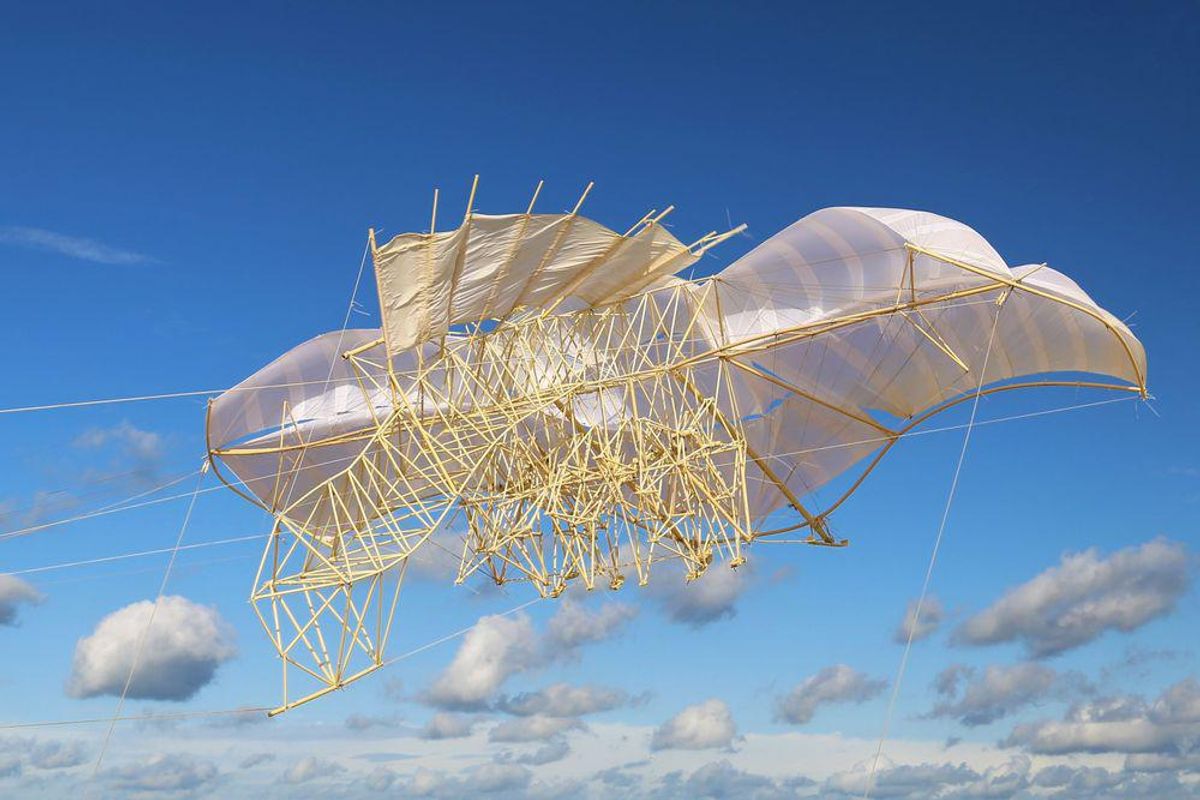Video Friday is your weekly selection of awesome robotics videos, collected by your friends at IEEE Spectrum robotics. We also post a weekly calendar of upcoming robotics events for the next few months. Please send us your events for inclusion.
ICRA 2022: 23–27 May 2022, Philadelphia
IEEE ARSO 2022: 28–30 May 2022, Long Beach, Calif.
RSS 2022: 21 June–1 July 2022, New York City
ERF 2022: 28–30 June 2022, Rotterdam, Netherlands
RoboCup 2022: 11–17 July 2022, Bangkok
IEEE CASE 2022: 20–24 August 2022, Mexico City
CLAWAR 2022: 12–14 September 2022, Azores, Portugal
Enjoy today’s videos!
Strandbeest Evolution 2021 provides an update on the evolutionary development. Every spring I go to the beach with a new beast. During the summer I do all kinds of experiments with the wind, sand and water. In the fall I grew a bit wiser about how these beasts can survive the circumstances on the beach. At that point I declare them extinct and they go to the bone yard.
[ Strandbeest ]
MIT CSAIL scientists created an algorithm to solve one of the hardest tasks in computer vision: assigning a label to every pixel in the world, without human supervision.
I don’t know how many pixels there are in the world, but I’m guessing it’s kind of a lot. Good luck STEGO!
[ MIT ]
A clever design for an antidrone drone, although from the look of things, you’ll have to be very talented to catch anything with it.
[ Aleksey Zaitsevsky ] via [ Gizmodo ]
Poramate Manoonpong shares his gecko-inspired climbing robot (Nyxbot), which can climb a 30-degree slope and cross over obstacles up to 38 percent of its body height.
He’s also been working on this hexapod robot with some of the cutest li’l feet I've ever seen:
We wrote about Calmbots a couple of years ago, but no reason not to watch this video and be squigged out again.
[ Calmbots ]
NASA’s Perseverance Mars rover used its Mastcam-Z camera system to shoot video of Phobos, one of Mars’ two moons, eclipsing the Sun. It’s the most zoomed-in, highest frame-rate observation of a Phobos solar eclipse ever taken from the Martian surface.
[ JPL ]
Get ready for some dramatic music and experience a day in the life of a busy Starship Robot as it autonomously delivers throughout the city of Milton Keynes from dusk until dawn. Our robots are completing tens of thousands of autonomous deliveries a day all over the world.
[ Starship ]
Our purpose-built vehicle is designed and engineered to drive safely in rain, hail, or shine. In this episode of Putting Zoox to the Test, members from our Durability team explain how we’re testing our hardware to ensure it functions as it should in wet weather.
[ Zoox ]
This video about a partnership between Sarcos and Palantir is astonishing because of how little it manages to say relative to its length and (I’m guessing) budget.
[ Palantir ]
Dr. Heidi from Philippines Flying Labs provides a first report of the drone delivery training in Tawi Tawi along with the very first medical drone deliveries that took place as part of this training.
[ PFL ]
Stanford was one of the pioneers in artificial intelligence. Hear from professors such as Chris Manning and Fei-Fei Li on the earliest days of natural language processing and computer vision, the work of scholars John McCarthy and Jay McClelland, the launch of the Stanford AI Lab, early robotics at the school, and other pivotal moments in Stanford AI.
[ Stanford HAI ]
In honor of ASIMO’s retirement, here’s a 20-minute history about the robot from Honda.
[ ASIMO ]
On this episode of the “Robot Brains Podcast,” Pieter talks with Eric Horvitz of Microsoft about AI for the Greater Good.
[ Robot Brains ]
Here are two talks hosted by UPenn’s GRASP Lab, featuring Kevin Lynch from Northwestern University, followed by Robert J. Wood from Harvard University.
[ UPenn ]
Evan Ackerman is a senior editor at IEEE Spectrum. Since 2007, he has written over 6,000 articles on robotics and technology. He has a degree in Martian geology and is excellent at playing bagpipes.



